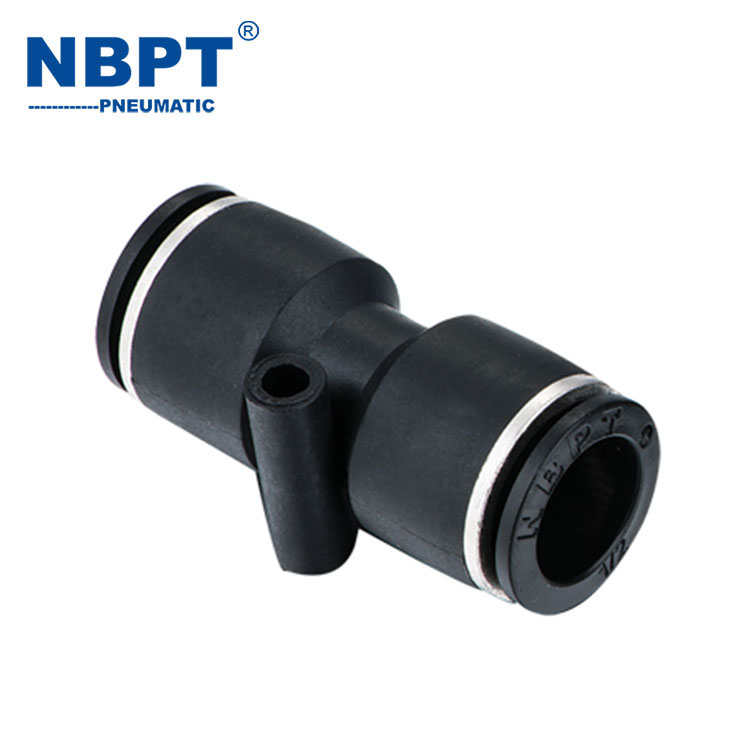Why Are Pneumatic Fittings Essential for Efficient Air Systems?
2024-12-25
Pneumatic systems are widely used across various industries, from manufacturing and automotive to food processing and healthcare. These systems rely on compressed air to perform tasks such as moving machinery, controlling valves, and powering tools. But behind the seamless operation of these air-driven systems lies a crucial component: pneumatic fittings.
What Are Pneumatic Fittings?
Pneumatic fittings are connectors used to join tubes, hoses, and other components in a pneumatic system. These fittings are designed to securely attach the different parts of the system, ensuring that air flows seamlessly from one point to another without leakage or obstruction.
There are several types of pneumatic fittings, including:
- Push-to-connect fittings: These allow for easy installation and removal of tubing with a simple push mechanism.
- Compression fittings: These are designed for more permanent connections, where the tubing is compressed tightly to create a seal.
- Threaded fittings: These involve screws or threads to secure connections between components.
- Barbed fittings: Often used in smaller systems, these fittings feature barbs that grip onto flexible tubing to prevent movement.
Each type of fitting is engineered to handle different air pressures, tubing materials, and operational environments, ensuring the integrity and performance of the pneumatic system.
Why Are Pneumatic Fittings So Important?
1. Leak Prevention
One of the primary functions of pneumatic fittings is to prevent air leaks. Even a tiny leak can drastically reduce the efficiency of a pneumatic system, resulting in higher energy consumption and increased operational costs. High-quality pneumatic fittings ensure a tight seal between components, helping to minimize or eliminate air loss. This is crucial for maintaining the system’s efficiency and minimizing waste.
2. Ensuring System Reliability
The performance of a pneumatic system depends on its reliability. If the components are not securely connected, it can lead to erratic air flow, which may cause equipment malfunctions or even system shutdowns. Pneumatic fittings provide a reliable connection that ensures the system operates smoothly. Whether you’re working with simple air tools or complex industrial machines, these fittings ensure that every component functions as expected.
3. Versatility and Flexibility
Pneumatic systems can vary widely depending on the application, which is why pneumatic fittings offer flexibility and versatility. Different sizes, materials, and designs allow for easy customization to meet the needs of any system. This makes it possible to connect components that are different in size, shape, and material without compromising performance or safety.
For instance, you can use quick-connect fittings to easily disconnect and swap components, or angle fittings for systems that require tight spaces or direction changes. This adaptability is especially valuable when designing or maintaining pneumatic systems in diverse environments.
4. Easy Installation and Maintenance
Installing and maintaining a pneumatic system should be as efficient as the system itself. Pneumatic fittings simplify both installation and maintenance processes. Push-to-connect fittings make it easy to install or replace tubing, while compression fittings provide a more permanent solution with no need for extra tools or complex procedures.
Moreover, the ease of maintenance is a key benefit. If a connection is damaged or a part needs to be replaced, you can easily disconnect the fitting and replace it without disassembling the entire system. This reduces downtime and improves the overall efficiency of operations.
5. Durability and Safety
Pneumatic systems often operate under high pressure and in challenging environments. Therefore, the fittings must be durable enough to withstand stress, vibration, and environmental factors such as temperature, moisture, and chemicals. Pneumatic fittings are made from materials like brass, stainless steel, and polymer, which are engineered to offer high resistance to wear and corrosion. This ensures that they maintain their integrity over time, even in demanding applications.
Additionally, high-quality pneumatic fittings contribute to safety by preventing air leaks that could lead to dangerous pressure buildups or system failures.
Applications of Pneumatic Fittings
Pneumatic fittings are used in a wide range of industries and applications, including:
- Manufacturing: For connecting tools, actuators, and robotic arms to compressed air systems.
- Automotive: To power air tools and equipment used in car assembly lines.
- Healthcare: In medical equipment such as respirators and patient monitoring systems.
- Food and Beverage: To control packaging and bottling systems where cleanliness and efficiency are critical.
- Construction: For connecting machinery that relies on compressed air, such as pneumatic drills and hammers.
These are just a few examples where pneumatic fittings are indispensable in ensuring smooth and reliable operations.
What Are the Alternatives to Pneumatic Fittings?
While pneumatic fittings are essential in air-driven systems, there are alternatives in certain applications:
- Hydraulic Fittings: Used for liquid-based systems where pressurized fluid replaces air.
- Electrical Connectors: In some cases, electrical connections are used to replace pneumatic systems for specific tasks.
- Welding or Soldering: In some mechanical systems, components may be welded or soldered together for permanent, high-strength connections.
However, for air-driven systems, pneumatic fittings remain the most efficient and reliable choice.
Conclusion: Why Choose Pneumatic Fittings?
Pneumatic fittings are the unsung heroes behind the success of pneumatic systems. By providing secure, reliable, and flexible connections, they ensure that air flows efficiently through the system, preventing leaks, reducing maintenance costs, and enhancing the overall performance of industrial, automotive, and healthcare equipment. Whether you’re designing a new pneumatic system or maintaining an existing one, choosing the right pneumatic fittings is essential for optimizing performance and ensuring long-term reliability.



